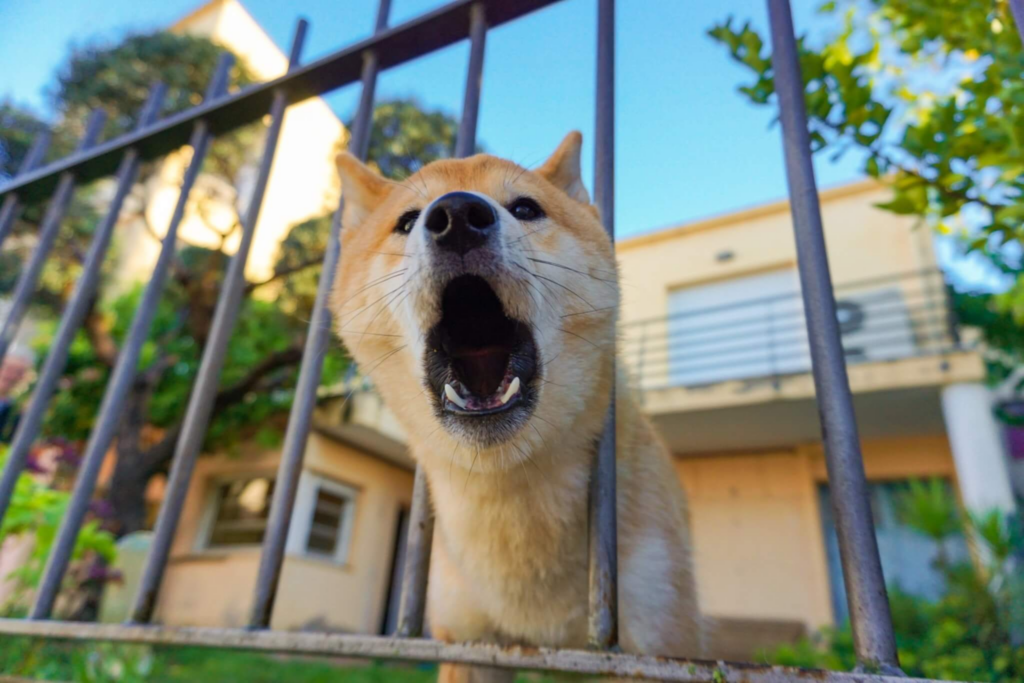© 2024 41 Pushups, LLC
SÃO PAULO, Brazil — Our four-legged friends come in a variety of shapes, sizes, and breeds. Between golden retrievers, Bernese Mountain dogs, and pugs or corgis, there’s truly a dog out there for everyone. Of course, some dogs tend to be more aggressive or disobedient than others. Now, fascinating new pup-centric research out of Brazil reports canine aggressiveness is likely influenced both by the dog’s prior life experiences and their owner’s characteristics and lifestyle choices.
For example, researchers say dogs who go for a walk every day with their owners were less aggressive than others. Meanwhile, pups owned by women tended to bark less at strangers, and heavier dogs were less disobedient than lighter pups. Notably, pugs, Bulldogs, Shih Tzus, and various short-snouted breeds appear to misbehave more than medium and long-snouted dogs like Golden Retrievers, or the caramel-colored mixed-breed dogs common in Brazil.
Researchers at the University of São Paulo (USP) analyzed a group of 665 pet dogs of varying breeds, as well as mongrels, to reach these conclusions. The study focused specifically on any correlations between aggressiveness and morphological, environmental, and social factors among dogs. Study authors explain aggressiveness appears to be influenced by both physical traits such as weight and skull morphology and by social and environmental factors like household, the dog’s life history, and the owner’s gender or age.
These results confirmed study authors’ original hypothesis that behavior is not just learned or influenced by genetics but also a consequence of continual interactions with the environment. This initiative was supported by FAPESP via a project aimed at putting together a more ethological approach to social communication among humans, and between humans and other animal species.
“The results highlight something we’ve been studying for some time: behavior emerges from interaction between the animal and its context. The environment and the owner-pet relationship, as well as morphology, are all factors that influence how pets interact with us and how we interact with them,” says study author Briseida de Resende, a professor at the Institute of Psychology (IP-USP), in a media release.
Researchers conducted this project during the COVID-19 pandemic. Dog owners completed three online questionnaires inquiring about themselves, their pet’s characteristics, the environment they lived in, and any aggressive behaviors (barking, attacking strangers). Those surveys were developed by Natália Albuquerque, a researcher at IP-USP, and Carine Savalli, a professor at the Federal University of São Paulo (UNIFESP).
“The owner’s gender was found to be a good predictor of behavior toward strangers, in that absence of aggressiveness was 73% more frequent among women’s dogs,” adds Flávio Ayrosa, first author of the article.
“The likelihood of aggressive behavior toward the owner was 40% lower among female dogs than among males,” Ayrosa continues. “Snout length was even more significant: aggressiveness toward the owner was 79% more likely among brachycephalic than mesocephalic dogs.”
Among brachycephalic dogs, the snout is short and the cranium rounded. Meanwhile, in mesocephalic breeds, the length and width of the skull are intermediate, featuring a squarish or triangular shape.
Also, researchers report that the heavier the dog, the less likely it was to display aggressiveness towards its owner. More specifically, chances of aggressive behavior dropped by three percent per extra kilogram (2.2 pounds) of body mass. Ayrosa stresses that the findings do not show a cause-and-effect correlation.
“We found relationships, but it’s impossible to say which comes first. In the case of the factor ‘walking the dog’, for example, it may be that people walked their dog less because the animal was aggressive, or the dog may have become aggressive because the owner didn’t take it out enough,” the researcher explains. “Traits such as weight, height, cranial morphology, sex and age influence the interaction between dogs and their environment. They may spend more time inside the home because of them, for example.”
Historically, a dog’s aggressiveness also has a connection solely to their breed. Over the past 10 years or so, however, a scientific paradigm shift of sorts has occurred. Why? Recent research has connected behavioral profiles to factors such as the age and sex of the dog, as well as their metabolism and hormones. This project was the first to analyze morphology and behavior, including aggressiveness in mongrels, or dogs of undefined breed.
“Researchers have only recently begun to investigate the influence of factors relating to the animal’s morphology, life history and origin [purchased or adopted], as well as characteristics of the owner, as our study did,” Ayrosa concludes.
The study is published in Applied Animal Behaviour Science.

About the Author
Born blue in the face, John has been writing professionally for over a decade and covering the latest scientific research for StudyFinds since 2019. His work has been featured by Business Insider, Eat This Not That!, MSN, Ladders, and Yahoo!
Studies and abstracts can be confusing and awkwardly worded. He prides himself on making such content easy to read, understand, and apply to one’s everyday life.
View John’s article archive
Cats rule – dogs drool.
These studies are pseudo. Dogs are not natural animals. They are mutated creatures literally. The last few decades they have been pushed into our homes; because secretly they pass illness onto humans. The CDC, health risk.gov provide real studies. Dog waste is #1 health hazard to our ecosystem. Media will silence this because dogs are big business.
Comments are closed.

Star Trek’s planet Vulcan is just an astronomical illusion, NASA debunks 2018 discovery

Shocking survey: Nearly half of Gen Z live a ‘double life’ online

Intermittent fasting and protein pacing: A winning combination for weight loss and gut health

Ancient Egyptian skulls reveal pioneering efforts to fight cancer: ‘Could not believe what was in front of us’
Study Finds
© 2024 41 Pushups, LLC

